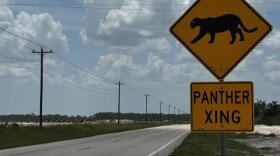The seawater lapping ashore on Seagate Beach and Keewaydin Island in Collier County is brown, but despite how it looks it’s not a cause for alarm.
It’s a bloom of Trichodesmium, a special kind of tiny plant that provides nitrogen to parts of the ocean with not enough nutrients.
Pronounced “trick-o-DEZ-mee-um,” sailors sometimes refer to it as “sea sawdust” because small blooms look like sawdust floating on the water. Larger blooms, which can be seen from space, look like oil slicks or foamy pollution.

Trichodesmium is not a good food source for other organisms and only a few specialized animals actively feed on it.
Blooms can appear brown when healthy and then green when tit starts to deteriorate. It turns some combination of either pink, red, or white when it decays, and then starts to emit a sweet smell similar to freshly cut hay.
Michael Parsons, professor of marine science at Florida Gulf Coast University, talked to weather.com about Trichodesmium, also known as saltwater blue-green algae.
Parsons said Trichodesmium blooms are a precursor for the development of red tides. That’s because when it’s growing on the surface of the water and sucks nitrogen from the air, it’s believed when it dies it sinks and serves as fertilizer for red tide.
“Without the Trichodesmium, there would not be enough nitrate or ammonium to support a red tide bloom,” Parsons told weather.com.” It basically makes its own fertilizer.”
Some strains produce toxins, but researchers have not documented any negative effects of Trichodesmium on marine life or people in Florida.
However, the Florida Department of Health advises against swimming in any water where there is an algae bloom.
Environmental reporting for WGCU is funded in part by VoLo Foundation, a non-profit with a mission to accelerate change and global impact by supporting science-based climate solutions, enhancing education, and improving health.
Sign up for WGCU's monthly environmental newsletter, the Green Flash, today.
WGCU is your trusted source for news and information in Southwest Florida. We are a nonprofit public service, and your support is more critical than ever. Keep public media strong and donate now. Thank you.








